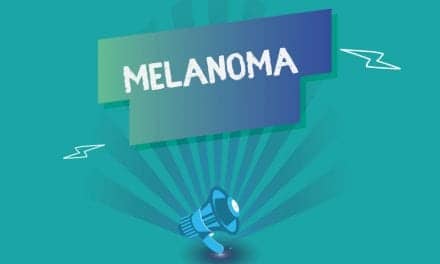With the first day of summer right around the corner, many Americans will increasingly head to the beach or water parks to cool down, but will they turn up their efforts to protect their skin from the sun? A new American Academy of Dermatology survey shows that despite skin cancer being the most common cancer in the U.S., only about one-third of adults are concerned about developing the disease, even though nearly 70% say they have at least one risk factor for skin cancer.
Additional survey findings include:
- 49% said they are more worried about avoiding sunburn than preventing skin cancer.
- 32% said they are more worried about avoiding wrinkles than preventing skin cancer.
- 25% said they got a sunburn in 2020.
“These findings are surprising and seem to suggest that many people do not take skin cancer seriously or perhaps believe skin cancer won’t happen to them. Yet, one in five Americans will develop skin cancer in their lifetime, and nearly 20 Americans die from melanoma, the deadliest form of skin cancer, every day.”
— board-certified dermatologist Robert T. Brodell, MD, FAAD, professor and founding chair of the department of dermatology and professor of pathology at the University of Mississippi Medical Center
Skin Cancer Characteristics
According to the United States Centers for Disease Control and Prevention (CDC), anyone can get skin cancer. People with some characteristics, however, are at greater risk:
- A lighter natural skin color
- Skin that burns, freckles, reddens easily, or becomes painful in the sun
- Blue or green eyes
- Blonde or red hair
- More than 50 moles
- A family history of skin cancer
- A personal history of skin cancer
“While there are many risk factors for skin cancer that people can’t control, such as having red or blonde hair or blue or green eyes, there are other risk factors that we can control, like preventing sunburns and avoiding tanning, both indoors and out,” Brodell adds. “Unprotected exposure to ultraviolet rays is the most preventable risk factor for skin cancer, including melanoma.”
Research shows the incidence of skin cancer among non-Hispanic white individuals is almost 30 times higher than that among non-Hispanic Black or Asian/Pacific Islander individuals. While not as common among people with skin of color, skin cancer is still a risk. Research also indicates that skin cancer in patients with skin of color is often diagnosed at a more advanced stage, when it’s more difficult to treat.
“What’s concerning is that invasive melanoma — melanoma that grows deeper into the skin or spreads to other parts of the body — is projected to be the fifth most commonly diagnosed cancer for both men and women this year,” Brodell says. “We need to make sure that everyone understands their risk for skin cancer and takes steps to prevent it as well as detect it early before it spreads.”
Keeping risk factors in mind along with practicing safe sun — such as seeking shade, wearing sun-protective clothing, and applying sunscreen — is critically important, Brodell notes. He also emphasizes that skin cancer is highly treatable when caught early, so it’s important to know what to look for and encourages everyone to perform regular skin self-exams. (The AAD’s 2021 SPOT Skin Cancer survey showed that 32% of U.S. adults have never done a skin self-exam.)
ABCDEs of Melanoma
Skin cancer warning signs include changes in size, shape, or color of a mole or other skin lesion, the appearance of a new growth on the skin, or a sore that doesn’t heal. If you notice any spots on your skin that are different from the others, or anything changing, itching or bleeding, the AAD recommends that you make an appointment with a board-certified dermatologist.
To help people find a possible melanoma on their skin, dermatologists created the ABCDEs of melanoma:
- A is for Asymmetry: One half of the spot is unlike the other half.
- B is for Border: The spot has an irregular, scalloped, or poorly defined border.
- C is for Color: The spot has varying colors from one area to the next, such as shades of tan, brown or black, or areas of white, red, or blue.
- D is for Diameter: While melanomas are usually greater than 6 millimeters, or about the size of a pencil eraser, when diagnosed, they can be smaller.
- E is for Evolving: The spot looks different from the rest or is changing in size, shape, or color.
With June 20 marking the first day of summer, the AAD is encouraging Americans to #PracticeSafeSun to protect themselves and their families from skin cancer.
To learn more about sun protection and skin cancer prevention and test your skin cancer knowledge via a short quiz, visit PracticeSafeSun.org.
[Source(s): American Academy of Dermatology, GlobeNewswire]
Related Content:
Americans Need a Refresher on Sunscreen Application and SPF, Per AAD Survey
Blood Pressure Medication May Increase Risk for Sunburn, Particularly for Non-Hispanic Black Women
One-Third of Americans Fail Basic Quiz on Skin Cancer and Sun Exposure, Per AAD Survey




